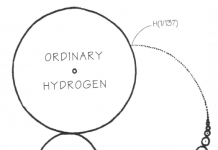Regular readers know I’m a big fan of wind power, especially in North America. I like the fact that the technology and business model are well understood, that most wind projects have good forward revenue visibility, and that wind is close to being competitive with conventional power generation without subsidies. Wind combines the best of both worlds: stable cash-flows and rapid growth. Over the past few months, concentrating solar power (CSP), a form of energy that is about as ancient as humanity, has begun appearing in the media and across the blogosphere with increasing frequency. What’s the hype all about? CSP has all that wind does plus one important characteristic: it’s ability to store energy makes it viable as a source of baseload power. This gives CSP a big edge over wind and solar, for which variability and thus reliability are important concerns. It’s no wonder, then, that we like CSP at AltEnergyStocks.com. A New Study On Tuesday, Emerging Energy Research (EER) released a study on CSP (this is a link to the press release’s PDF – the actual study must be purchased). EER argued that CSP is now the fastest growing utility-scale alternative energy source after wind, and expects US$20 billion to be poured into the sector over the next 5 years. The 2 hottest markets at the moment, according to the study, are the Southern US and Spain. These 2 markets alone will install about 7,500 MW of CSP between now and 2020, while other southern European nations will install about 3,200 MW over the same time period. In the US, c consortium of southwestern electric utilities recently put out a Request For Proposals for what would be the largest CSP facility in either Nevada or Arizona. On the federal side, the DOE recently announced a $5.2 million investment in CSP. Much potential also exists in North Africa and the Middle East. As a matter of fact, it has been argued that the Maghreb region could help meet a significant portion of Europe’s electricity needs cleanly and renewably through CSP. This could also be an attractive means for Israel and other middle eastern nations to generate the power needed to de-salinize large amounts of sea water. The Competitive Landscape Two main types of players are currently hustling it out in this space, according to EER. First, CSP pure-plays (for lack of a better term…) that are seeking to leverage their technological advantages. Second, established electric utilities with good access to prime sites and plenty of capital. Here we find the usual suspects: Iberdrola (IBDRY.PK) (which is looking to partially spin-off its renewables unit), FPL (NYSE:FPL) and Acciona (ACXIF.PK) Looking out a few years, I wouldn’t be surprised if once credit markets are back on their feet the latter looked to gobble-up some of the former. For a list of the biggest players in the US, Spain and the rest of the world, have a look at the table at the bottom of the press release. For those looking for more background into the technology itself and how investors should think about the market, Tom wrote a useful piece this past September comparing CSP and solar PV. DISCLOSURE: The author does not have a position in any of the firms discussed in this article. DISCLAIMER: I am not a registered investment advisor. The information and trades that I provide here are for informational purposes only and are not a solicitation to buy or sell any of these securities. Investing involves substantial risk and you should evaluate your own risk levels before you make any investment. Past results are not an indication of future performance. Please take the time to read the full disclaimer here.




Great article. And do you realize that this energy can be sent thousands of miles on high voltage dc, a well established technologies. The Germans looked at Solar Thermal in N. Africa transmitted 3000 km under the Mediterranean at their estimated transmission cost of about one cent per kwh.
THE AVERAGE PERSON CANNOT INVEST IN LARGE-SCALE CSP PURE PLAYS. THE NEAREST YOU CAN GET IS ABENGOA, ACCIONA AND SOLAR MILLENIUM. ALTERNATIVELY THERE IS ANOTHER WAY TO SAFELY JUMP ON THE CSP BANDWAGON AND THAT IS TO BUY SILVER OR SILVER MINING AND EXPLORATION COMPANIES. SILVER USED IN MIRRORS IS INDISPENSABLE FOR CSP AND ABOUT 1 GRAMME PER SQUARE METER IS REQUIRED. IT HAS NO PRACTICAL SUBSITUTES AS MARIGINALLY LOWER COST ALUMINUM MIRRORS HAVE A LOWER EFFICIENCY DUE TO THEIR NARROWER LIGHT SPECTRUM REFLECTIVITY. STARTING NOW AND OVER THE NEXT FEW YEARS THIS NEW DEMAND COMBINED WITH OTHER FACTORS WILL TRANSLATE INTO MILLIONS OF OUNCES OF INCREASED SILVER CONSUMPTION PUTTING A STRAIN ON DECREASING ABOVE GROUND INVENTORY AND RESULTING IN HUGE UPWARD PRESSURE ON PRICES. START HOARDING SILVER.
Interesting insight into how many commodities are interconnected, Drake (electricity and silver, in this case.) My personal favorite CSP play is electricity transmission, especially high voltage DC transmission, because long distance transmission will be needed to get the power from the sunny dry areas where CSP works well to most population centers, as Sol points out in his comment..